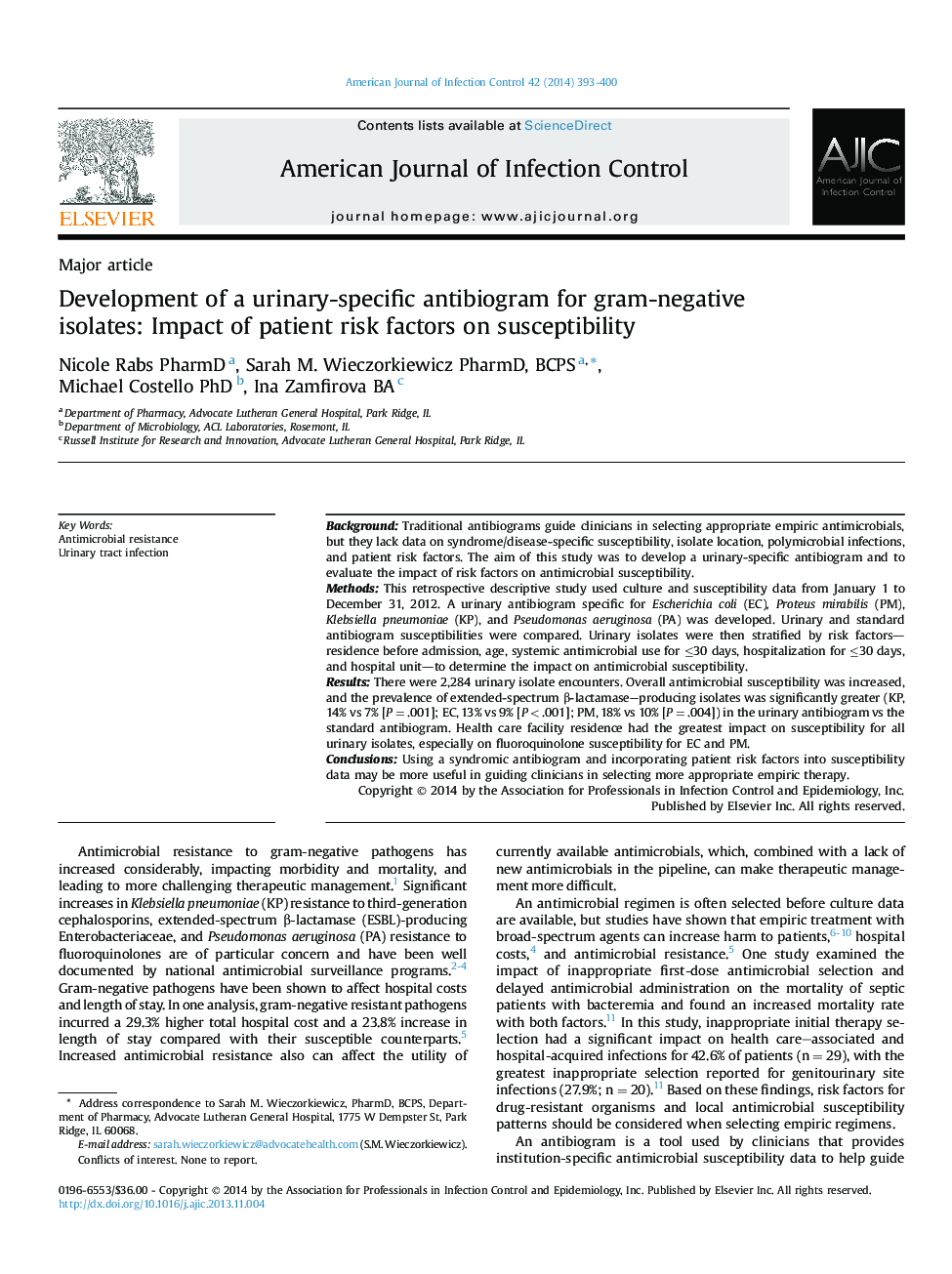| کد مقاله | کد نشریه | سال انتشار | مقاله انگلیسی | نسخه تمام متن |
|---|---|---|---|---|
| 2639309 | 1563488 | 2014 | 8 صفحه PDF | دانلود رایگان |
BackgroundTraditional antibiograms guide clinicians in selecting appropriate empiric antimicrobials, but they lack data on syndrome/disease-specific susceptibility, isolate location, polymicrobial infections, and patient risk factors. The aim of this study was to develop a urinary-specific antibiogram and to evaluate the impact of risk factors on antimicrobial susceptibility.MethodsThis retrospective descriptive study used culture and susceptibility data from January 1 to December 31, 2012. A urinary antibiogram specific for Escherichia coli (EC), Proteus mirabilis (PM), Klebsiella pneumoniae (KP), and Pseudomonas aeruginosa (PA) was developed. Urinary and standard antibiogram susceptibilities were compared. Urinary isolates were then stratified by risk factors—residence before admission, age, systemic antimicrobial use for ≤30 days, hospitalization for ≤30 days, and hospital unit—to determine the impact on antimicrobial susceptibility.ResultsThere were 2,284 urinary isolate encounters. Overall antimicrobial susceptibility was increased, and the prevalence of extended-spectrum β-lactamase–producing isolates was significantly greater (KP, 14% vs 7% [P = .001]; EC, 13% vs 9% [P < .001]; PM, 18% vs 10% [P = .004]) in the urinary antibiogram vs the standard antibiogram. Health care facility residence had the greatest impact on susceptibility for all urinary isolates, especially on fluoroquinolone susceptibility for EC and PM.ConclusionsUsing a syndromic antibiogram and incorporating patient risk factors into susceptibility data may be more useful in guiding clinicians in selecting more appropriate empiric therapy.
Journal: American Journal of Infection Control - Volume 42, Issue 4, April 2014, Pages 393–400
